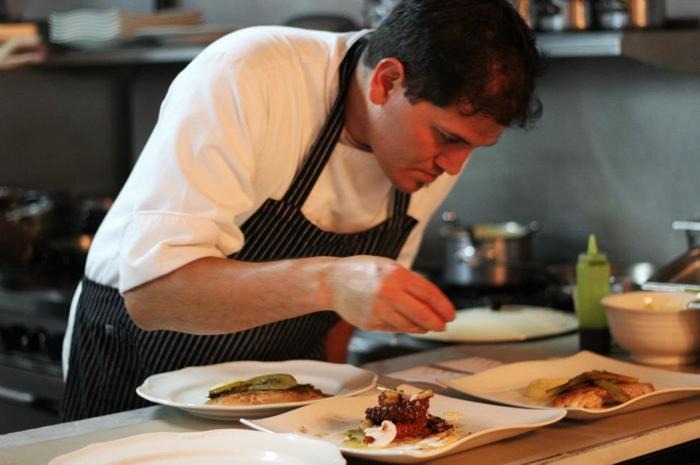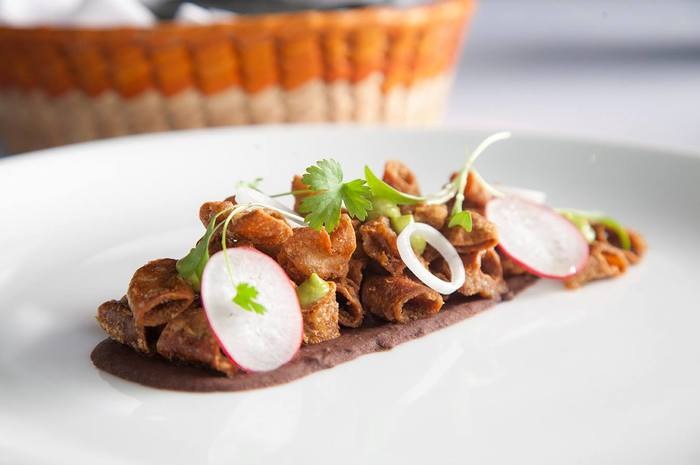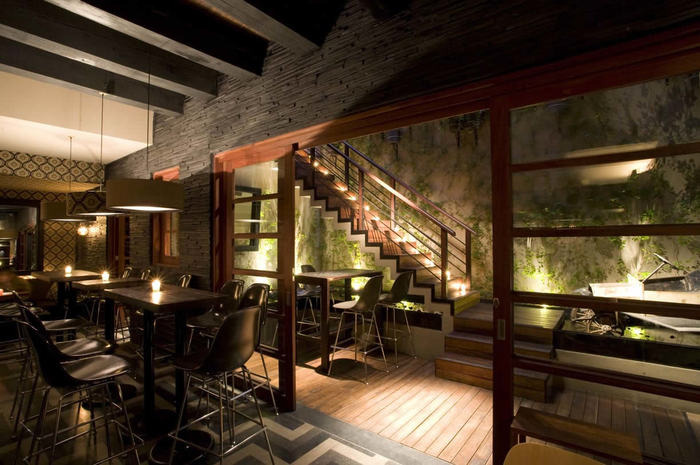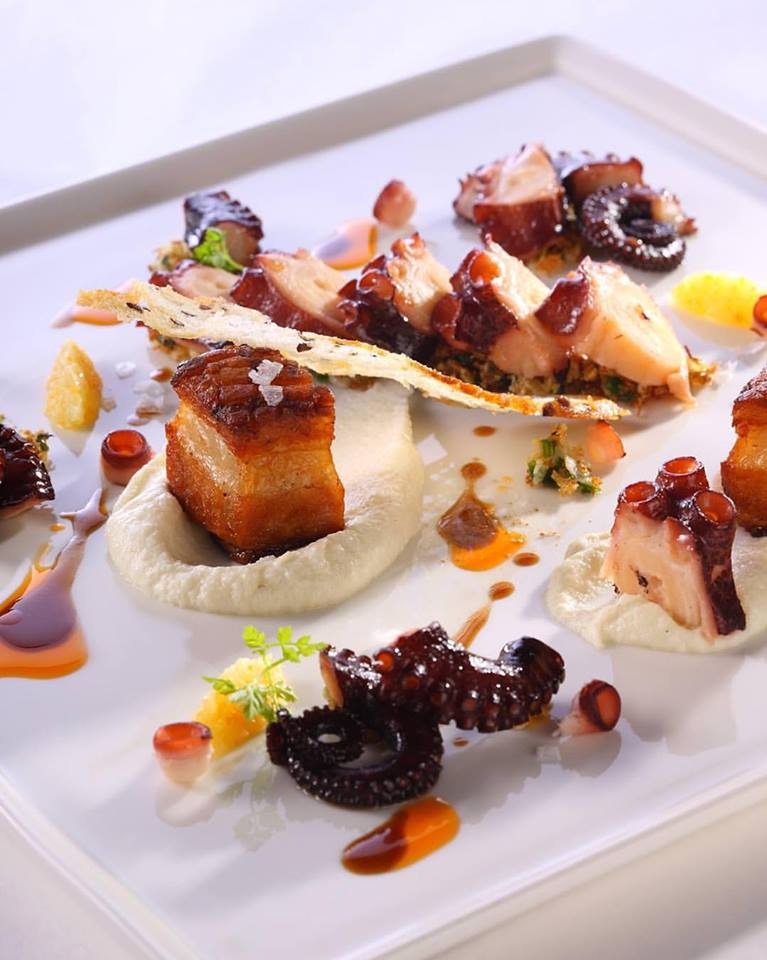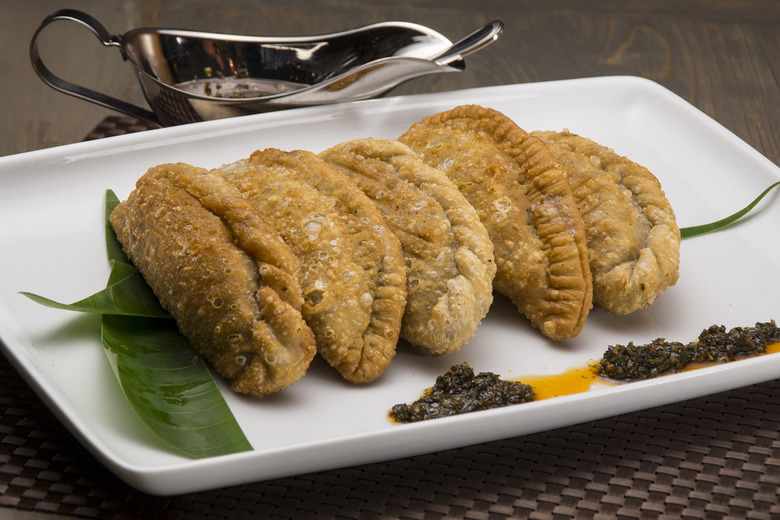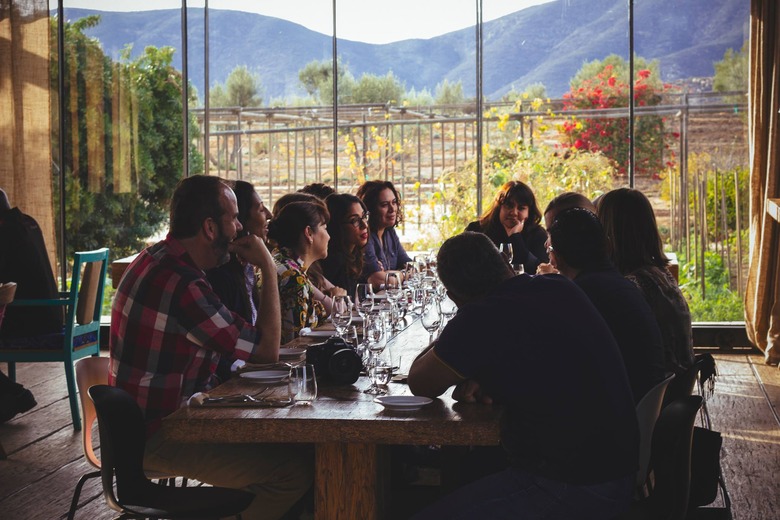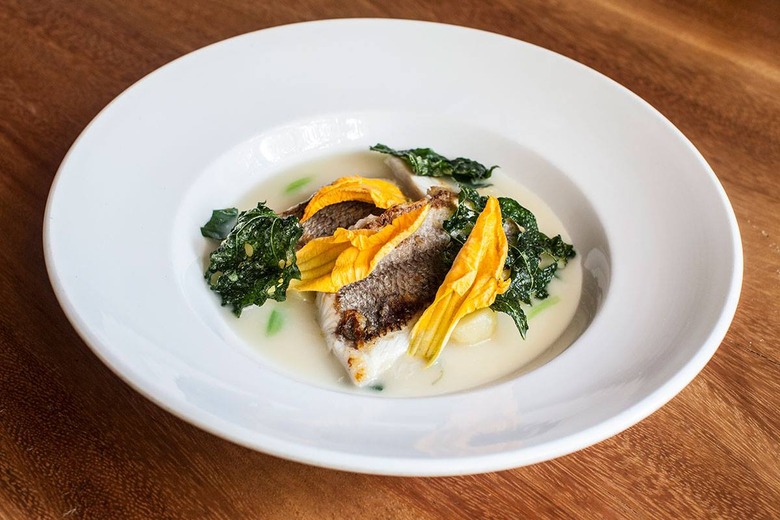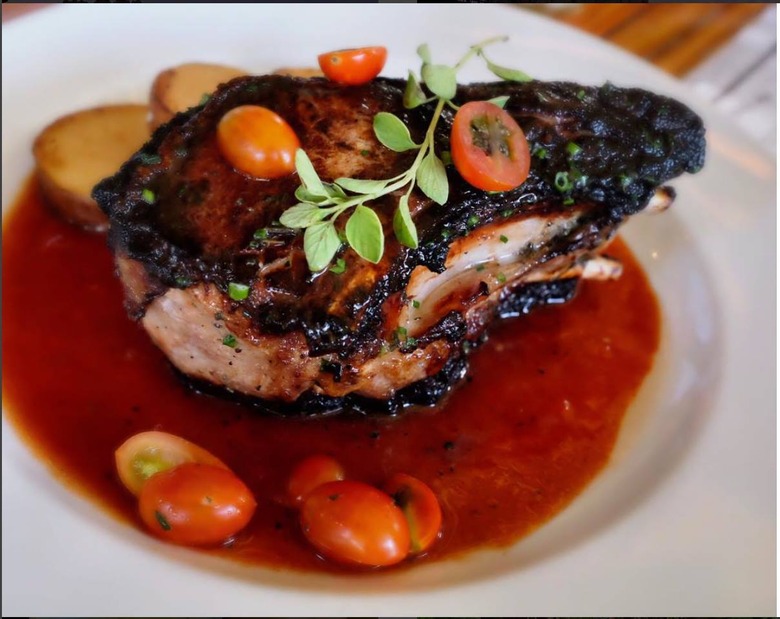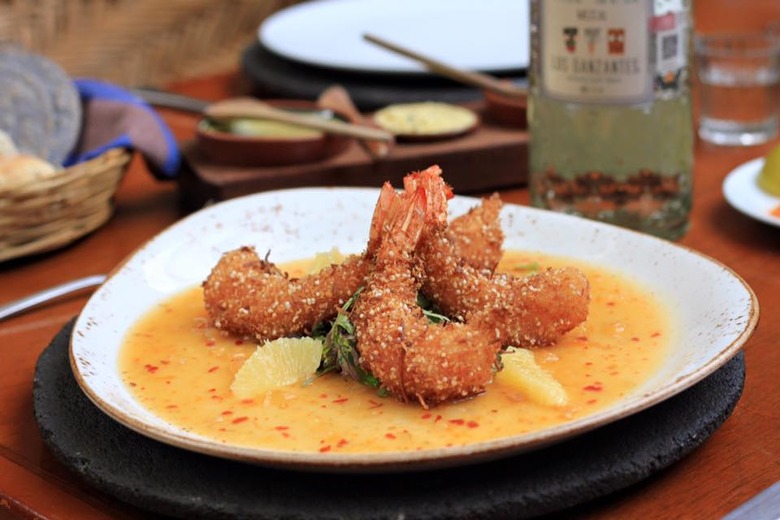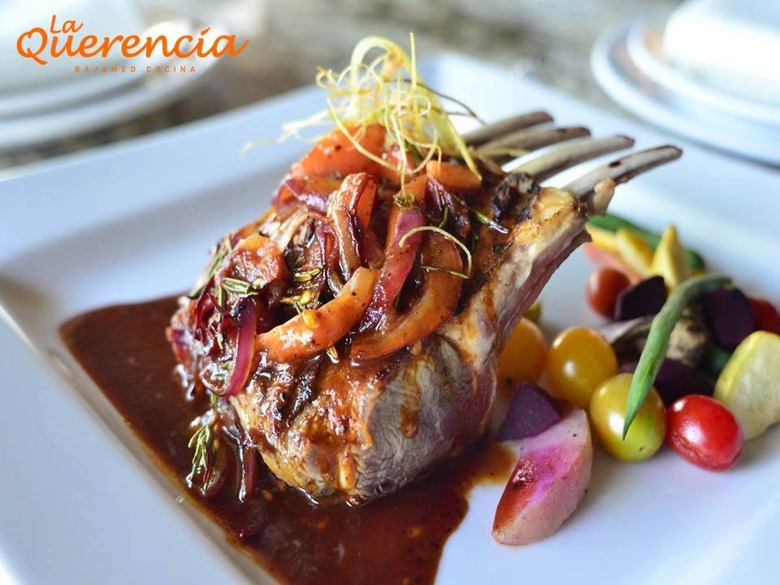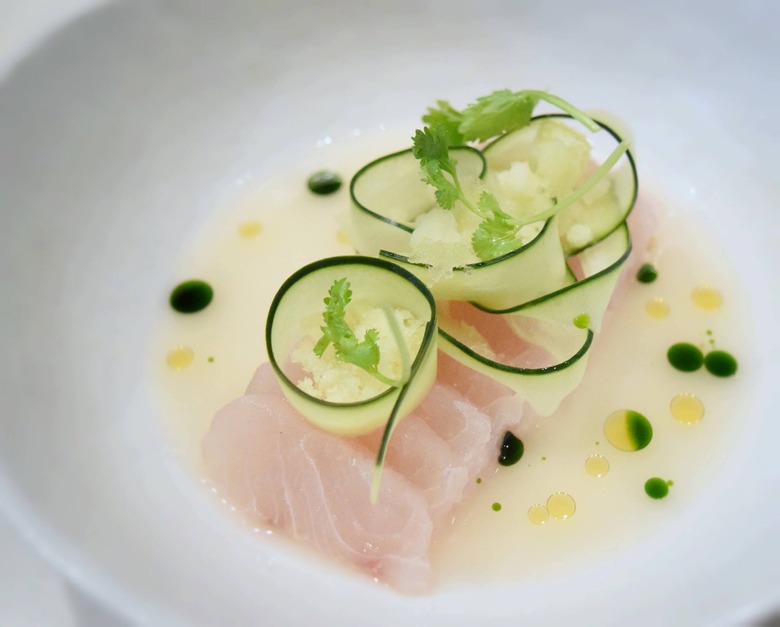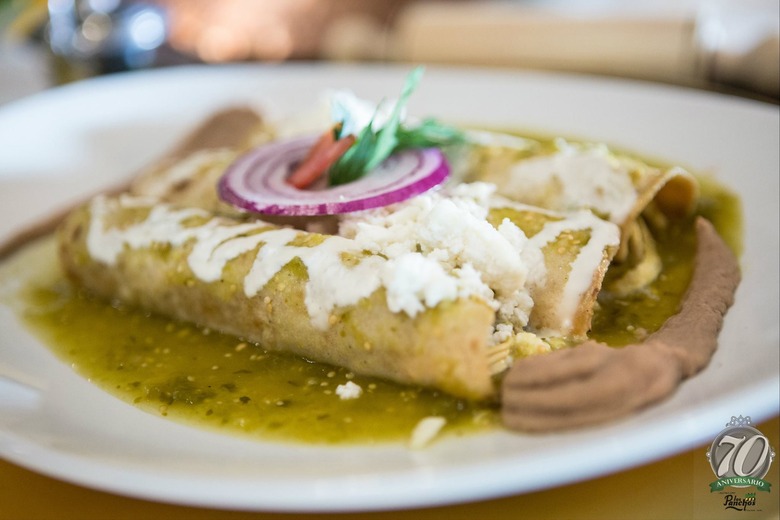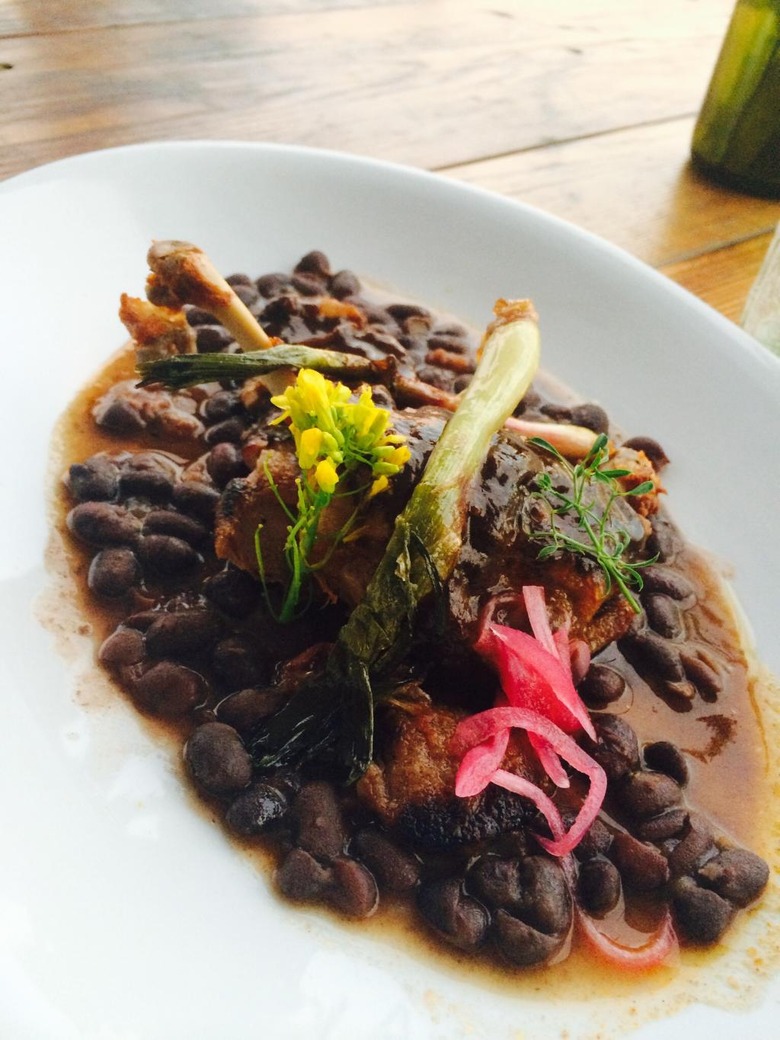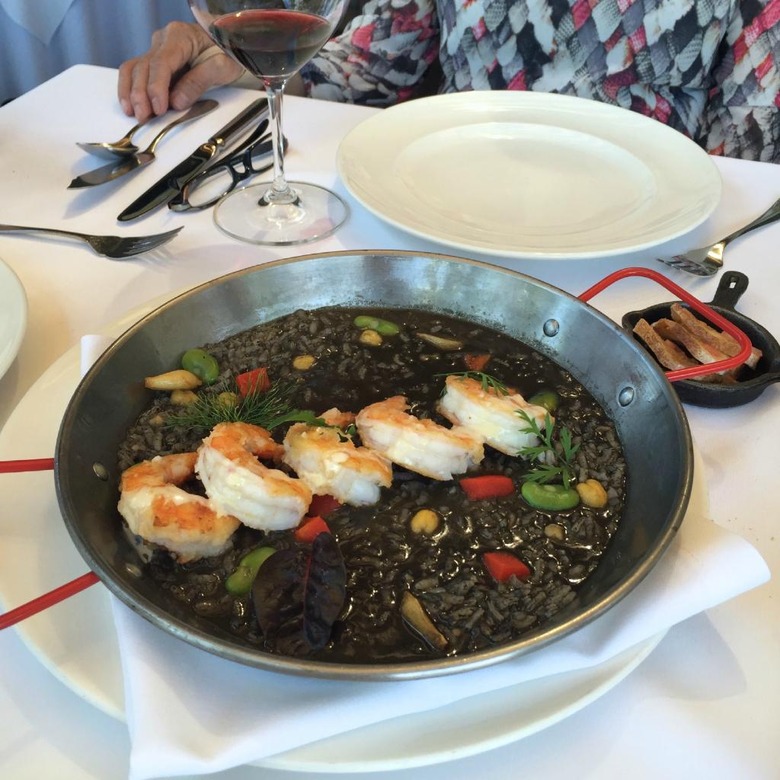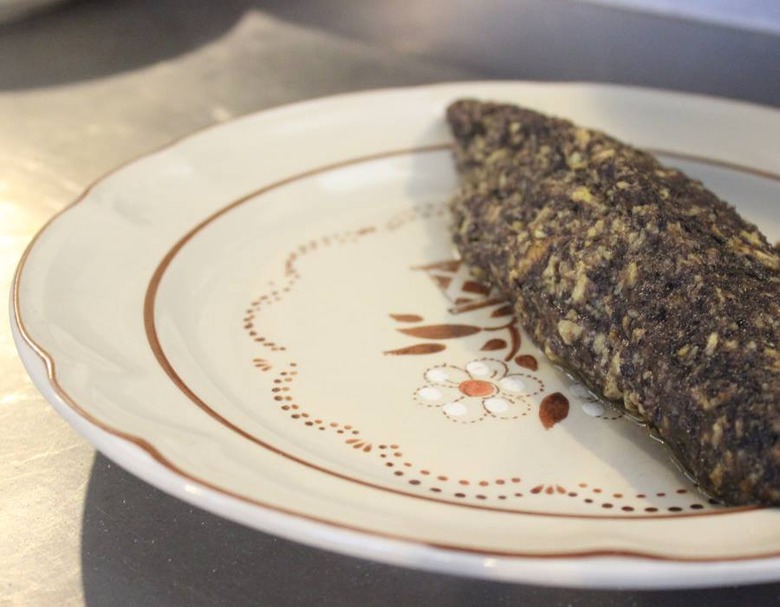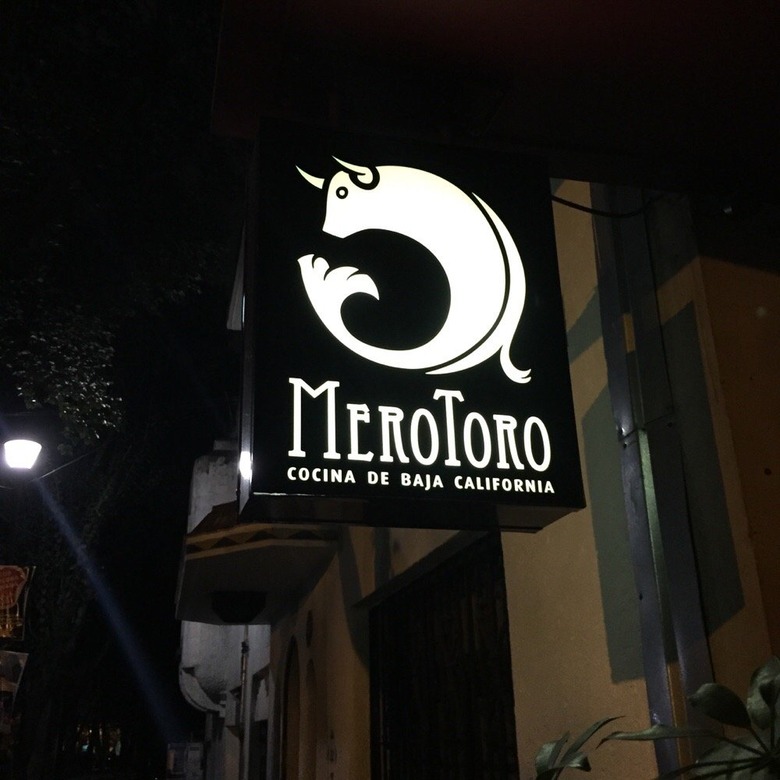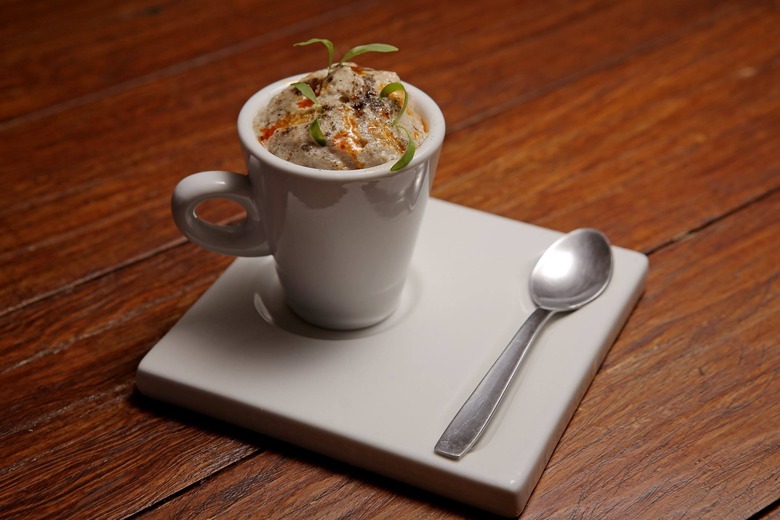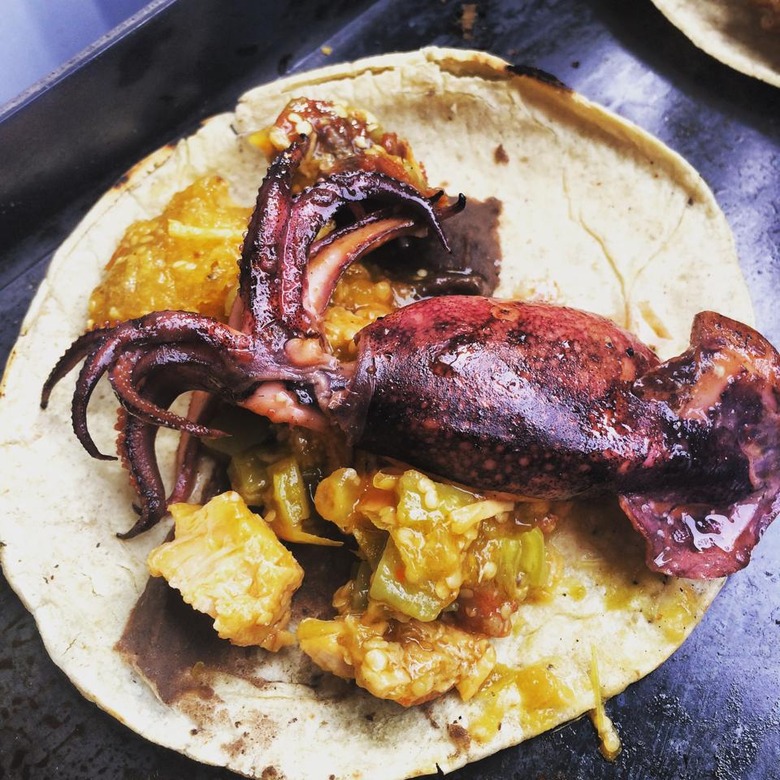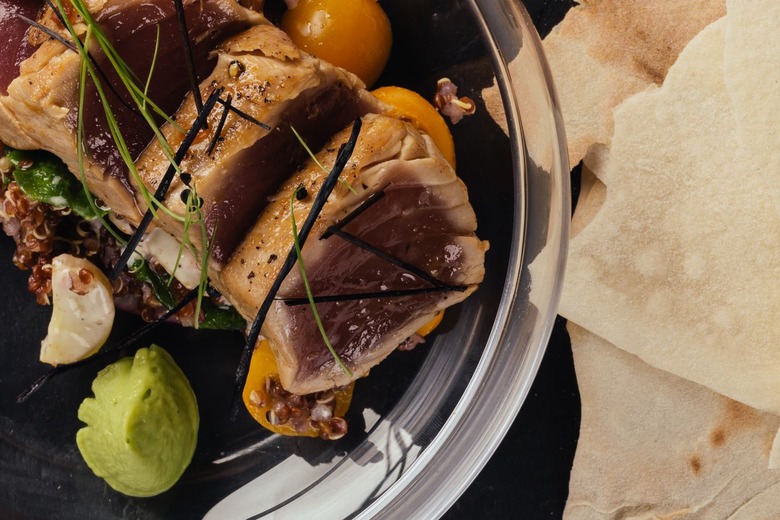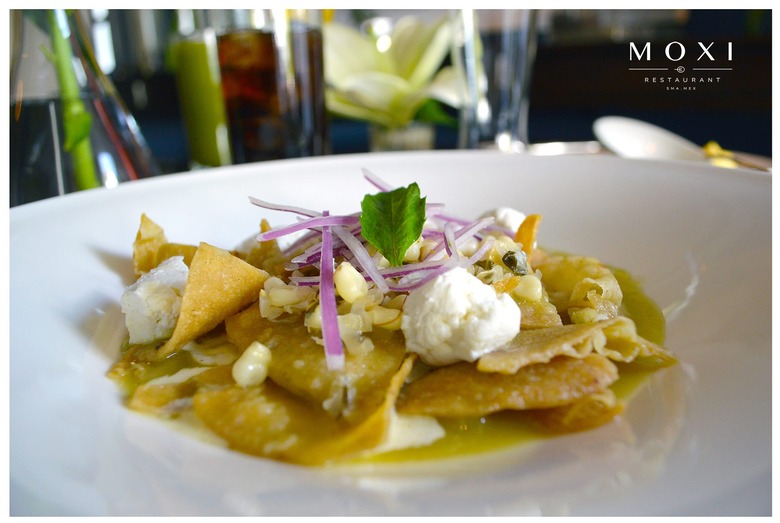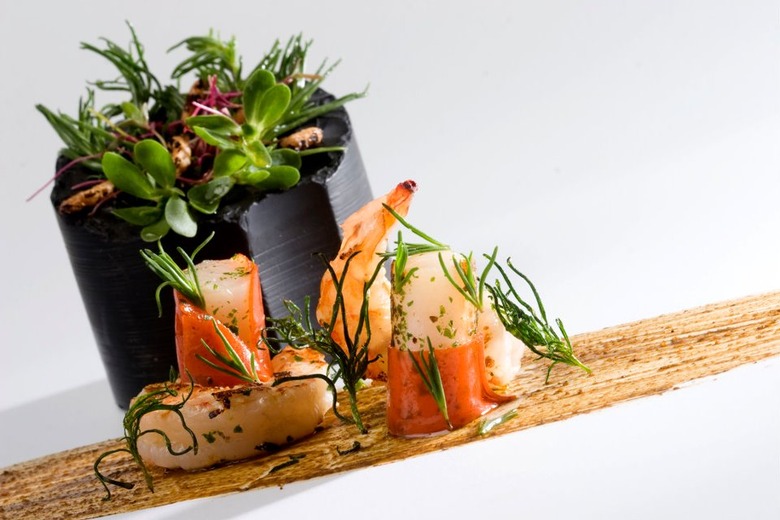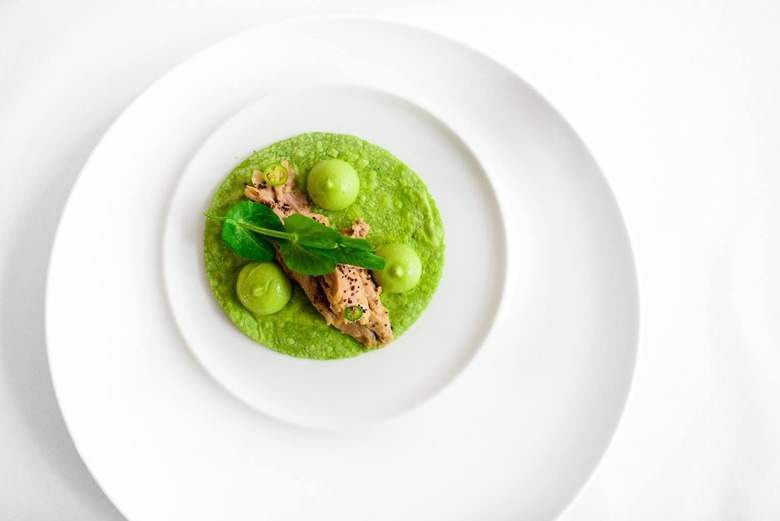25 Best Restaurants In Mexico 2016 (Slideshow)
One of the many restaurants linked to Mexico City's Pujol (more on that later... multiple times), by way of chef Eduardo García, who worked both there and at Le Bernardin in New York before establishing Máximo Bistrot. Serving a fusion of Mexican and French cuisines (with a bit of Italian as well), García offers guests dishes like mussels in butter sauce, porcini mushroom soup, sliced duck breast with sheep milk risotto, roast beetroot with goat cheese and fig pâté salad, organic pork ribeye, or confit suckling pig, all in a charming and upscale-yet-casual setting. In a commitment to local production, everything from the food to the furniture to the dinnerware is fair trade, sustainable, and local.
#24 Amaranta, Toluca de Lerdo
About an hour outside of Mexico City, chef Pablo Salas is implementing forward-thinking techniques and practices at his raved-about Amaranta. There, Salas uses modern cooking styles to enhance local produce and deliver dishes with big, bold flavors. For appetizers, go for the pig trotters carpaccio au vinegar — fine slices of boneless pig's feet with vinegar, olive oil, and oregano, with cabbage salad, chayote, carrots, and serrano chiles. Mains include oxtail in a manzano pepper mole served with a salt-cured nopal (cactus) salad and cilantro sprouts; roasted veal breast braised for six hours and served with refried beans, pico de gallo, and guacamole-tomatillo sauce; chicken with mole served with glazed sesame and vegetables; and ribeye served with smoked mashed potatoes, organic white beets, and truffle oil. Salas' brother, Francisco, is the sommelier here and creates unique food and drink pairings, making sure not to neglect local beers and spirits.
#23 Sud 777, Mexico City
Although there are many veteran restaurants dotting this list, they need to make way for young chef Edgar Nuñez, who is currently leading the youth movement charge in Mexico. Using traditional ingredients in unconventional ways, Nuñez's Sud 777 features innovative dishes like carrots cooked in duck fat and served with sour cream; heirloom tomato and fried pork skin salad with minced cactus; beef tongue over black beans, purslane blossoms, and morita chile sauce; and wheatgrass and goat cheese ice cream. The interior is just as chic and modern as the menu, and contains a courtyard seating area that blurs the line between indoor and outdoor — almost like sitting underneath a giant, open skylight.
#22 Quintonil, Mexico City
In 2012, former Pujol chef Jorge Vallejo opened Quintonil, a restaurant that soon became one of the country's most exciting eating places. Vallejo, whom the American godfather of Mexican cuisine, Rick Bayless, described as executing "a very fine, and in some cases really brilliant" style of cooking, kicks Mexican cuisine up a notch. He focuses on ingredients that are native to Mexico — sourcing from small-scale producers across the country — while spicing up dishes with more contemporary cooking techniques. The ambiance delivers a warm, cozy feel, with Vallejo's wife overseeing the floor and personally attending to guests. On the menu, you'll find reinvented dishes like sardines in green sauce with fennel and purslane, octopus in its own ink with potatoes and sausage, and homemade mole with charred tortillas and basil sprouts, along with other dishes.
#21 Deckman's en El Mogor, Valle de Guadalupe
Georgia-born chef Drew Deckman — who won a Michelin star at Restaurant Vitus in the northern German town of Reinstorf, was executive chef at the Raffles L'Ermitage Hotel in Beverly Hills, and may or may not have cooked privately for Tom Cruise — became famous for his Deckman's San José restaurant in Los Cabos. For several years, he'd leave the place in summertime and migrate north to Baja's Valle de Guadalupe, Mexico's premium wine country, to cook at an informal outdoor restaurant there at the Mogor Badán winery. Now he has moved permanently north, taking up fulltime residence at Mogor Badán, which is also an organic farm — a fact Deckman takes full advantage of. Even the olive oil comes from the property (and seafood from the nearby Baja coast). Dinner is served at picnic tables, outside with a view of the vines or under a tin roof, and the cooking is all done with live fire (no gas or electric ranges). Expect Baja Kumiai oysters, grilled local fish, grilled octopus, grilled quail, roast pork, and other straightforward but perfectly prepared specialties that enhance, and are enhanced by, the local vintages.
#20 Silvestre, Valle de Guadalupe
An outdoor grill and picnic tables under a canopy hung with ceiling fans are all that chef Benito Molina, of Ensenada's Manzanilla, needs to satisfy touring wine-lovers (and indigenous winemakers) in the Valle de Guadalupe, Mexico's premier wine country. Its name means "wild," and Silvestre — open only on weekends, and only from late spring to early autumn — indeed has an attractively unstructured, out-in-the-countryside feeling about it. The menu is fixed-price, including six courses of locally sourced foodstuffs — perfect salads, grilled organic vegetables, lightly smoky grilled oysters, great seafood from all along the Baja littoral (swordfish and tuna are regulars), maybe herb-strewn lamb or Sonoran ribeye steak with grilled scallions and tortillas, and Baja cheeses. It all tastes even better than it probably would in an indoor restaurant; that expanse of vineyard that begins just a few feet away adds real flavor.
#19 Corazón de Tierra, Valle de Guadalupe
Sitting in this rustic-modern dining room in the middle of Mexico's Baja California wine country, you can look outside and see the kitchen garden from which chef Diego Hernandez culls some of his herbs and vegetables, and the orchard that yields fruit for his tables. What you can't see, because it's 15 miles or so away, is the Pacific Ocean from which the chef obtains the super-fresh seafood, from oysters to octopus to rock cod or tuna, that forms a large part of his ever-changing menus. Add in homemade breads and specialties like roast quail with black beans and honey-yogurt ice cream with banana purée and chocolate crispbread, and irrigate everything with choices from the on-site Vena Cava Winery, and you have an extraordinary wine country experience.
#18 Rosetta, Mexico City
Since 2010, Rosetta — a mansion-turned-restaurant — has been on a slow but steady rise toward becoming one of Mexico City's most impressive eateries. Chef-owner Elena Reygadas has made seasonality, simplicity, freshness, and flavor the cornerstones of Rosetta. The food is Mexican with Italian and other Mediterranean influences. On the menu diners will find authentic homemade pastas and dishes, including sea snails with nasturtium leaves; quail with assorted grains, alfalfa, and smoked milk; and a dessert of roasted figs, orange, and hoja santa ice cream. Another exceptional dish from the menu is veal sweetbreads with yogurt, peppermint, moscatel plum, and za'atar. Rosetta also has an impressive in-house bakery that has developed a cult following.
#17 Flora's Field Kitchen, San José del Cabo
Its location down a rutted, dirt road may make some tourists wary, but don't let the adventure of getting there deter you. Flora's Field Kitchen, located on Flora Farm, a 10-acre organic farm-plus-market in the foothills of the Sierra de la Laguna Mountains, offers an unforgettable farm-to-table dining experience in a beautiful setting. All ingredients used come from the farm, owned by Gloria and Patrick Greene; breads are made from a wood oven, and the free-range meat comes from their nearby 150-acre ranch. New chef Aaron Abramson, a veteran of Blue Hill at Stone Barns, offers diners everything from a sandwich of homemade sausage with pickled vegetables (at lunch), to burrata with tapenade, to 12-inch pizzas from the wood oven, to family-style fried chicken dinners with mashed potatoes, gravy, and biscuits. Diners rave about the fresh juices and the specialty cocktails, like the hibiscus martini or the pelo de perro, Flora Farm's twist on the Bloody Mary. Sometimes, farm walks are offered pre-meal, and often there is live music into the early evening. A suggestion to keep in your back pocket: Diners suggest taking a cooler along so you can buy some fresh produce and artisanal goods to bring back to your hotel with you.
#16 Los Danzantes, Oaxaca
Named for the carvings of dancing figures on the ruins of nearby Monte Albán, the famed pre-Columbian archeological site, Los Danzantes ("The Dancers") delivers a supreme sampling of Oaxaca's famous moles and mezcal. Set in the courtyard of a renovated three-story colonial building, Los Danzantes is architecturally stunning. The restaurant features an 80-seat open-air dining room, adobe walls, and a shimmering pool. Guests can be seen dining on fondue de huitlacoche, a corn fungus and cheese fondue with serrano pepper served in a rustic bread bowl; seed-crusted seared tuna with sesame vinaigrette, garlic, and oil dressing duet and a salad; salmon cooked in a traditional Oaxacan black mole, served with plantain and coconut purée and pico de gallo; and ribeye in a salsa de chapulines (grasshopper sauce) with coffee potatoes.
#15 La Querencia, Tijuana
Miguel Ángel Guerrero Yaguës, the chef–proprietor of this Tijuana original, may have coined the term "BajaMed." He was certainly one of the earliest practitioners of this tantalizing hybrid cuisine. La Querencia has a hip, contemporary-industrial look: bare concrete floors, lacquered steel tables, and exposed ducts overhead. Subtle, low-tech touches abound, like mounted game trophies on the walls, a tropical fish tank at one end of the dining room, and a row of rusty old cooking implements hanging above the divider that separates the open stainless steel kitchen from the dining room. The focus here is on fresh Baja seafood — scallop carpaccio, grilled shrimp salad, Cajun salmon, a mixed seafood plate with red and white miso sauces, and hot chiles. Also available are dishes like fresh pasta with several sauces to choose from, like roasted tomato sauce or pesto, lamb chop in pesto sauce, and a range of tacos, tostadas, and burritos employing such uncommon fillings as smoked marlin, giant squid, manta ray, tuna fin stew, and abalone "chorizo" — all of it delicious.
#14 Néctar, Mérida
Chef Roberto Solís' haute cuisine at Néctar is as ambitious as that produced in the big-name kitchens he trained in, like those of Noma, Per Se, and The Fat Duck. Located in the Yucatán, Néctar has a simple philosophy: Stay true to the original flavors and roots of the cuisine, while presenting dishes in a new, evolved manner. Using the techniques of the modernist kitchen, the menu includes dishes such as tamal with pumpkin seed foam and roasted cherry tomatoes; twice-fried pork belly with roasted guava and Edam cream cheese; suckling pig in a red sauce with onions, beans, and oregano; and crispy-skin chicken with lime salsa and marmalade of habanero chiles with chochoyotes (corn masa dumplings).
#13 Los Panchos
At first glance, the menu at Los Panchos in Mexico City seems like a traditional one you'd find at any number of similar Mexican restaurants — making this a joint that needs to be experienced first-hand for the full effect. Order anything — carnitas, chicharrón, guacamole, enchiladas, or arrachera with nopales (beef with salad made from Mexican cacti) — and the decades-old (founded in 1945) recipes will come front and center, whether it's in the taste itself, or the careful preparation of each dish. Of course, if you're in a rush, tacos and other portable dishes can be taken on the go too — while you explore everything else Mexico City has to offer.
#12 Altozano, Valle de Guadalupe
Javier Plascencia (of Tijuana's Misión 19 and Caesar's, and San Diego's Romesco, among other restaurants) is at the helm of Altozano, a rustic, open-air restaurant located right on the chef's own ranch and vineyard. Before (or after) dining, guests can roam around the property and enjoy glasses of wine while sitting atop giant oak barrels or on an elevated seating area that offers breathtaking views of the surroundings. The ambiance is so enchanting that you might forget that food is the whole reason you're there. Not for long though, as the fare will soon become front-and-center with offerings like an octopus appetizer, a lamb birria main (and Mexican standards like tacos, burritos, and tostadas that are anything but standard), and an assortment of pastas and steak.
#11 Pangea, Monterrey
Guillermo González Beristáin opened Pangea in 1998, and since then has set the standard for Mexican haute cuisine, influencing chefs and other restaurants to follow in his footsteps of presenting local Mexican produce in new, inventive ways. Beristáin has opened several other restaurants in northeastern Mexico, but Pangea remains his flagship, serving diners Mexican cuisine prepared with modern French techniques. Notable dishes include goat (Monterrey's specialty) cooked in beer; steak tartare; foie gras with tuna, watermelon, and truffle oil; angel hair pasta served with shrimp, grilled vegetables, and chiles; and loin of dorado with pork stew, served with a purée of smoky corn and tomato marmalade. Pangea is also home to a highly regarded wine cellar, as Beristáin is a strong supporter of Mexican wines.
#10 Fonda Margarita, Mexico City
Fonda Margarita is a tiny, modest restaurant in a building made of native clay with a sliding white door and a red tin roof — but don't let that fool you. The line to dine at this celebrated haunt — which was featured in Anthony Bourdain's No Reservations — begins around 5 a.m. By 7 a.m., everyone in town, it sometimes seems, has filtered in to gobble up the daily offerings until doors close at noon. There is a set menu each day offering four to seven dishes, as well as the regular menu. Popular choices include albóndigas (meatballs); longaniza or chicharrónes en verde (sausage or fried pork skins in green salsa); tortas de carne (meat patties); and bistec en pasilla (steak in pasilla chile sauce).
#9 MeroToro, Mexico City
"Mero" is grouper; "toro" is bull. Put them together and you have a splendid "surf-and-turf"-themed restaurant opened in 2010 by Gabriela Cámara and Pablo Bueno of the popular Contramar. The place may be located in Mexico City's posh Colonia Condesa, but the vibe is relaxed (bare tables and slat-backed chairs, open kitchen), and the inspiration comes from far to the northwest, from Baja California, and Cámara and Bueno have secured the services here of one of that region's most accomplished chefs, Jair Téllez of Laja in the Valle de Guadalupe, Baja wine country. Téllez pleasantly surprises palates in the Mexican capital with fresh ceviches, risotto with bone marrow and red wine, birria (a spicy stew usually made with mutton or goat) of clams, and a delicately cooked grouper (of course) on a bed of puréed cauliflower. Tellez's signature dish, though, shows that he has both feet on the ground: pan-fried pork jowl with lentils and a poached egg. Plus, the excellent sourdough bread is unique in Mexico.
#8 Laja, Ensenada
When he's not overseeing the cooking at MeroToro in Mexico City, Jair Téllez — whose background includes stints at Daniel in New York City, La Folie in San Francisco, and the Four Seasons in Mexico City — can be found at his original restaurant, Laja, in the Mexican wine country of Valle de Guadalupe. Téllez was a pioneer of Baja Mediterranean cuisine, and is fanatical about using the freshest and best organic ingredients grown around the place — Laja has its own orchard, farm, and vineyard — and in other parts of the valley. Téllez offers a four- or eight-course menu that changes by the week, as he cooks according to the best and most seasonal ingredients available. Menu particulars can be unpredictable, but his salads are anthologies of freshness, his soups are authoritative (a cream of eggplant with jamón serrano, for instance), his seafood is first-rate (marinated yellowtail with preserved lemon), his pastas are inventive (Swiss chard ravioli with ranch egg and beef juice), his meat dishes are full of flavor and perfectly cooked (oven-roasted local lamb with shallots and mustard greens has been a standout dish), and his desserts (white chocolate royal with mascarpone cheese) are delectable. As Laja has its own vineyard, Téllez makes his own wines, and also serves a fine selection of the valley's best.
#7 Contramar, Mexico City
Gabriela Cámara, the chef–proprietor of this perpetually crowded seafood restaurant, has recently opened the innovative Cala in San Francisco, but she is hardly neglecting her original establishment. This is one of those places that visiting chefs always want to go to, and you can see why. The food here is based on the freshest possible ingredients (yes, Mexico City is inland, but there is a tremendous demand for top-quality seafood here, and purveyors manage to get fish and shellfish into local kitchens mere hours after it's been caught or harvested), and the presentations are simple but right. Carnitas at Contramar are made from fish, not pork, but they're superb. Fresh tuna is fileted and grilled with a glaze of chiles; tostadas are topped with tuna or with shrimp, octopus, or crab meat; six or eight varieties of simply cooked fish are usually offered — and a sometime special, chiles en nogada, filled with seafood instead of pork, are not to be missed.
#6 neXtia, San Miguel de Allende
Bricio Domínguez proved himself as one of the most original chefs in Mexico at his El Jardín de los Milagros in the central Mexican capital of Guanajuato. That establishment is still going strong, but now Dominguez has expanded his reach into the pretty tourist town of San Miguel de Allende with a casual, more-or-less traditional place called 13 Cielos and this restaurant, in the boutique Nena Hotel, featuring his "cocina del autor," or creative cuisine. That translates to such things as cream of black bean soup with charred tortilla foam and guindilla chile oil, wild salmon with cilantro pesto and baby beets, and grilled sirloin with Cambray potato foam and caramelized onions — or, for the truly adventurous, sopes (like thick tortillas) of charred yellow corn with escamoles (ant larvae), avocado sauce, and moth-larvae salt.
#5 Manzanilla, Ensenada
You've got to love a restaurant whose front window reads "Fine Wine, Live Abalone, Rare Mezcal." The hot pink chandeliers and massive wooden back bar (like something out of an upscale cantina from a century ago) that greet you when you enter are a good sign, too. Manzanilla is a place with personality. Husband-and-wife chefs Benito Molina and Solange Muris, pioneers of the so-called "Baja Med" movement, opened this Ensenada hotspot in 2000, tapping into the Baja California region's natural ingredients and resources. "[Baja California] has the best fish, the best alcohol, the best wine, so the combination is just perfect. It's every chef's dream to live [here]," Molina said once in an interview. The menu at Manzanilla is heavily seafood-focused, offering such delights as truly memorable fish with ginger, chile serrano, and soy sauce; oysters steamed with white wine or beer; grilled clams with gorgonzola; fish of the day with chickpea purée, chayote, and seaweed; and for the non-piscatorially inclined, ribeye served with Cambray potatoes; pork loin with vanilla-scented apples and polenta; and a few other meaty specialties.
#4 Misión 19, Tijuana
Javier Plascencia, whose family owns everything from pizzerias to the revivified dining room at Hotel Caesar's (whose original proprietor, Cesare Cardini, invented the Caesar salad), has been instrumental in helping to turn the infamous border town of Tijuana into an increasingly serious restaurant town. Looking out on the city from the second floor of a modern office building, Misión 19 — with wraparound windows, an open latticework of wood enclosing the bar, pastel neon accents, and cactuses that look like something out of a cartoon — is Plascencia's flagship, his most innovative and original restaurant. Among the dishes with which Misión 19 tempts diners are a baby kale, avocado, and compressed cucumber salad with cured salmon trout and goat cheese dressing; risotto with heirloom beans, wild mushrooms, and huitlacoche; seared fresh local tuna with cactus, black mole caramel, and pickled shimeji mushrooms; and tablitas (crosscut beef ribs) vacuum-cooked for 48 hours and served with "cracklings" of beluga lentils, chayote, and Brussels sprouts.
#3 Moxi, San Miguel de Allende
Condé Nast Traveler anointed San Miguel de Allende, a pleasant and colorful artists' and American retirees' community in the state of Guanajuato (northwest of Mexico City), as the top city in the world a couple of years ago — leaving such burgs as Barcelona, Paris, and Sydney in the dust. San Miguel is certainly an engaging and eye-catching place, and one of its great attractions — and a rare example of contemporary architecture in the city — is the Hotel Matilda, a comfortable and alluring hostelry graced by an excellent restaurant, Moxi. Moxi is under the direction of Enrique Olvera, of Mexico City's unparalleled Pujol, and the hot new Manhattan entry Cosme. Here, in a pleasant, art-enhanced dining room with a breezy terrace, Olvera's crew draws heavily on organically-raised local produce to create Mexican-accented international cuisine: shrimp burgers with tartar sauce and guacamole; fish of the day with pineapple purée, serranos, and a cactus salad; pumpkin risotto and squash blossom; artichoke salad with orange, goat cheese, balsamic, and nuts; rack of pork with radishes, watercress, and beans; and many other vividly flavored delights.
#2 Biko, Mexico City
The Mexican-Spanish fusion cuisine served at Biko is described by chefs Bruno Oteiza and Mikel Alonso as "sumptuous with surprises." The menu, which changes often, focuses on locally sourced seasonal ingredients, turned into refined, simple dishes that match the minimalist décor of Biko's dining room. The signature appetizer, "Foie 100% Algodón [Liver 100% Cotton]," is an elegant plate of whipped foie gras served with different complements depending on the season, including a version wrapped in iceberg lettuce, with cheese, and topped with cotton candy. Biko consistently ranks at or near the top of numerous lists of the world's best restaurants.
#1 Pujol, Mexico City
After graduating from the Culinary Institute of America in Hyde Park, N.Y., and working for the superb Alsatian-born chef Jean Joho at Everest in Chicago, Enrique Olvera opened this contemporary-style restaurant in Mexico City in 2000 with the idea of using indigenous ingredients and traditional cooking methods to produce food with French-style refinement. He succeeds admirably with such dishes as bocol huasteco, a kind of plump tortilla with cheese from Chiapas; a mixed vegetable assortment in a mole of pumpkin seeds and broccoli; an "esquite" made not with the usual corn kernels but with wheat berries, flavored with epazote cream, serrano chiles, and queso oreado; and the remarkable "mother mole," cooked for hundreds of days and containing scores of ingredients, served as a pool of sauce with translucent sesame tortillas. The restaurant's list of mezcals is eye- and palate-opening (try the farolito, made from wild agave, fermented in leather, and distilled in clay), and the collection of Mexican wines, especially the reds, is one of the country's most extensive.
